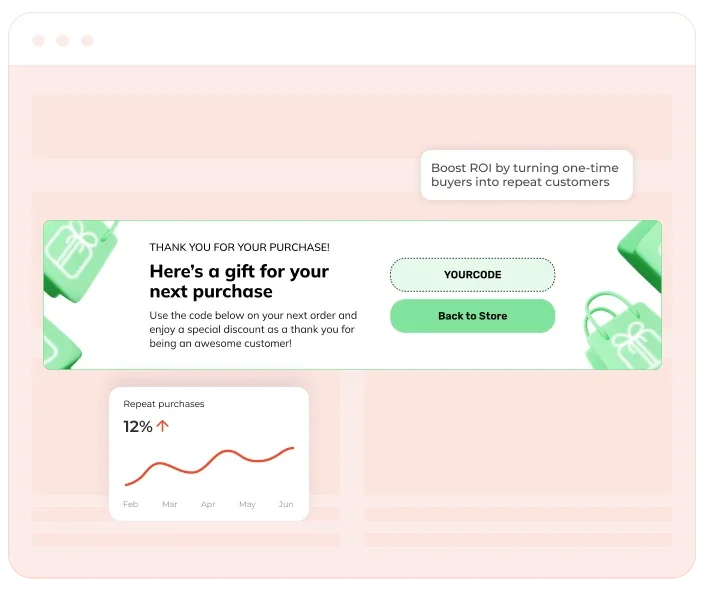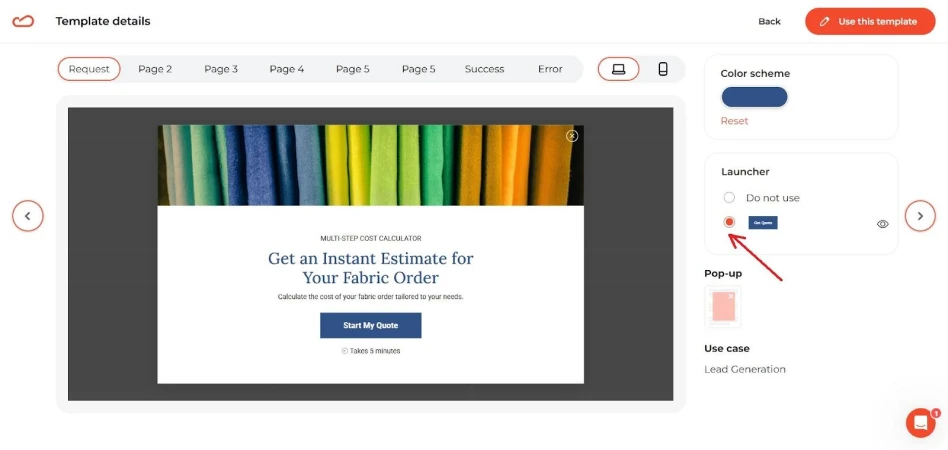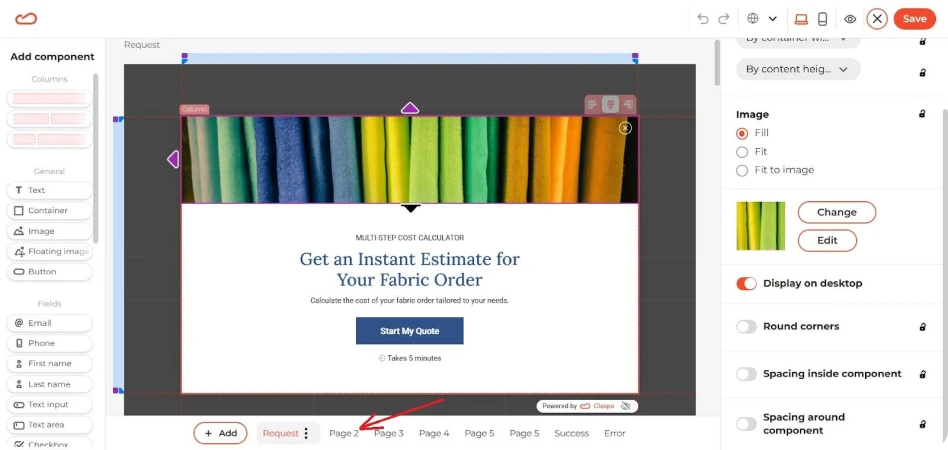Request for Service Form Explained: What to Include, When to Use, and How to Customize It
Every business, no matter the size or industry, gets customer requests. Some are quick questions, others are detailed service needs — repairs, maintenance, quotes, you name it. Without a simple way to handle those, things fall through the cracks fast.
That’s where a customer service request form comes in. It’s a digital form your customers can fill out to tell you exactly what they need. Whether it’s a support issue, a request for service, or a quote inquiry, the goal is the same: make it easy to ask for help — and easy for your team to respond.
These days, customers don’t want to make a phone call or wait on hold — they want to fill out a form and move on. And when that form is clear and easy-to-use, it does more than just gather details. It helps both sides get on the same page.
A good online request form cuts down on back-and-forth. It shows the customer that their request was received, and it gives your team the info they need to take action — without digging through messy email threads.
What is a service request form — and what isn’t it?
If someone needs help — a fix, a rental, a price estimate — they shouldn’t have to explain it over and over. It’s a simple way for customers to reach out — and for your team to get what they need to respond quickly. Of course, not all forms do the same job. A request for service form is usually tied to action: fixing something, scheduling a visit, or starting a task. A quote request form is about pricing — the customer needs a cost estimate before moving forward. And information request forms are more general — someone’s interested, but not quite ready to take action yet.
Knowing when to use which form keeps things running smoothly. Here’s how they typically break down:
- A repair form works best when customers need help with broken or malfunctioning items.
- A maintenance request form is great for scheduled service — think regular checkups or tune-ups.
- A rental form might handle short-term equipment or venue bookings.
- A transportation request forms help coordinate deliveries, pickups, or on-site logistics.
In busy teams, having the right form saves time. Instead of tracking down missing details, your system can simply create a record, pass it to the right person, and move it forward. It’s not just about the form itself — it’s about how it fits into your process.
Things move even faster when forms are connected to the tools your team already uses. Whether it’s a CRM, a ticketing system, or a shared inbox, requests can be automatically routed to the right person or department. This keeps things from piling up in the wrong queue.
If a request needs approval — like for a custom quote or a specific service — you can set the form to notify the approver automatically. That way, it moves forward without delays or extra emails. It’s a setup many teams already rely on to stay organized.
A customer submits a request. The system assigns it, routes it, and notifies the right person. Someone reviews the details, approves if needed, and gets the ball rolling — all without having to copy-paste a single thing.
Key elements of an effective customer service request form
At its core, a customer service request form should make life easier for both sides. It gives your team what they need to take action — and shows the customer you’re on it. Start with the essentials:
- Contact info.
- Type of request.
- Short description.
- Any specific details they need to include.
The next step is to make the form smart. If someone selects ‘repair’, show them fields related to the issue. If they’re asking for a quote, let them choose a product or upload specs. Forms that adapt based on the user’s choices make things feel simpler while actually collecting more useful info.
The form layout matters too. A template shouldn’t just look clean — it should help people move through the steps quickly. Each field should have a purpose. If a question isn’t needed, leave it out. The best form templates are designed to streamline not just the look, but the entire request process.
And don’t forget the follow-up. Once someone fills out the form, they should know it went through. That’s why it’s helpful to send a quick confirmation via email. Let the person know their request came through — and, if possible, what happens next.
Widget placement, UX, and the psychology of filling out a form
Well-designed service forms won’t do much if no one sees them — or if they’re a pain to fill out. That’s why placement and design matter just as much as the questions you ask.
Start with where it shows up. If your form lives on a contact page that’s buried in your footer, most people will miss it. Instead, try adding a request form widget where users are most likely to need help — like near product details, pricing, or support content. A slide-in, sticky button, or embedded section can work well without taking over the screen.
Good form UX also comes down to trust and clarity. If someone doesn’t know why they’re filling out a form or what to expect after, they’re less likely to bother. A quick note explaining the purpose and what happens next helps more than you’d think.
You don’t need anything flashy. Just make sure the process feels simple. Don’t ask for more than you need. Keep the steps clear. Let people know what happens after they submit. It keeps the process simple — on both sides.
Choosing the right service forms for your workflow
Not every business handles service requests the same way — and that’s why using a generic form often leads to confusion or missed details. The best approach is to start with a form template designed to streamline the kind of requests you regularly receive.
Think about what the form needs to do behind the scenes. Does it need to route a request to a specific team? Collect detailed specs before a quote? Trigger a follow-up message? The right form functionality should match the task — not just the layout.
For example, a comprehensive form for a product repair might include file uploads, model numbers, and preferred service times. A lighter information form for general questions might only need contact details and a dropdown selection. When the form template is designed to simplify things for both the user and your team, it creates less friction — and fewer follow-up emails.
Even the wording matters. You can guide the process just by labeling fields clearly or removing anything that doesn’t help you get to the next step. A well-crafted form template doesn’t just look good — it works better from the inside out.
Forms that do more: from quotation requests to complex use cases
Some forms are built to answer a simple question. Others carry the weight of more complex processes — from quoting to onboarding to scheduling. And when they’re done right, they don’t just collect data — they help move things forward.
Take a quotation request. You might need more than just basic contact details — maybe item specifications, location info, or scheduling preferences. The aim is to collect everything needed upfront, so your team can respond quickly and accurately. That’s where structure matters.
Or think about the times when marketers want to create a form that feeds into a sales or support funnel. A one-size-fits-all form won’t work here. You need something flexible enough to handle different stages, routes, and handoffs. That’s why it helps to create request forms tailored to each step — whether it’s interest, intent, or issue resolution.
Great service forms are built to reduce friction at every stage. They streamline the process of collecting key info, and they streamline the process of requesting something clearly — whether it’s a callback, a quote, or a fix.
Turning requests into action with the right tools
Great customer service doesn’t stop when users submit a request — in fact, that’s where the real work begins. The entire process of submitting and managing service forms should be built to facilitate action, not create bottlenecks.
When a request is well formed your team can get the request with all the info they need — no chasing, no guesswork. So you can collect information effectively and distribute tasks to the right people at the right time. Whether its requests from customers about repairs, rentals or service quotes the flow should feel seamless — for the user and for your team.
Want to get faster responses, less delays and happier customers? It starts with the right setup. Choose tools that make it easy to build workflows, distribute requests to the right teams and track progress without handoffs.
That’s where Claspo can help. If you’re ready to put these ideas into practice, Claspo gives you everything you need — for free. Our Lifetime Free plan includes full access to:
- Multi-step forms with conditional logic.
- A drag-and-drop editor that’s simple yet powerful.
- A built-in multilingual AI translator.
- A library of templates, each one to make creating and managing forms easier.
- Responsive design for desktop and mobile.
- Integrations with marketing platforms.
Whether you want to create a request form from scratch or optimize how your team handles incoming tasks, Claspo helps you facilitate the entire process — start to finish. No limits. No code. No catch. Just better ways to serve your customers.



